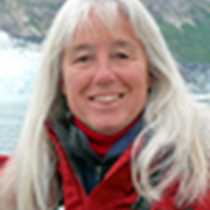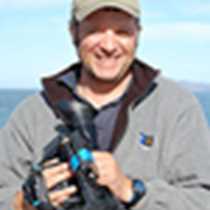The sun rose through a gap in the cloud layer over the port city of Vancouver, British Columbia as National Geographic Sea Lion cruised south in Georgia Strait. We maneuvered through Active Pass, which was alive with bird activity and harbor seals seeking food in the swirling waters. The sky cleared as we made our way among the Gulf Islands and then crossed the international border between Canada and the United States.
On the west side of San Juan Island we had the good fortune of finding some killer whales (orcas). There were quite a few animals altogether, spread out along the shore and traveling to the north. Several adult males showed their six-foot-tall dorsal fins, gracefully slicing through the water as a small group of females and a young orca cruised nearby. They were moving at great speed, waves breaking over their backs with a lovely backdrop of Lime Kiln Point and a lighthouse standing majestically behind them. This area is home to J, K, and L pods. This resident population is endangered, threatened by pollution and human activity. It was a privilege to see these beautiful creatures in the wild. As we turned north to sail over the top of San Juan Island, we were surprised and delighted by leaping orcas emerging from the sea in full-body breaches!
After lunch we docked at Friday Harbor, a lovely small community on San Juan Island. Once we cleared customs, we strolled the docks and wandered up to the Whale Museum. The museum featured the life, times and history of whales of the San Juan Islands, primarily orcas. A huge gray whale skeleton amazed us with its size and grandeur. Folks walked the streets, exploring the boutiques under sunny skies and relaxing into the unique character of island life. Mount Baker, a large volcano in the Cascade Mountains of Washington, was enjoyed in brilliantly clear weather.
After our final recap of the expedition, we devoured a delicious crab feast for dinner and went to bed with sweet dreams of our remarkable journey along the Alaskan and Pacific Northwest coasts.









